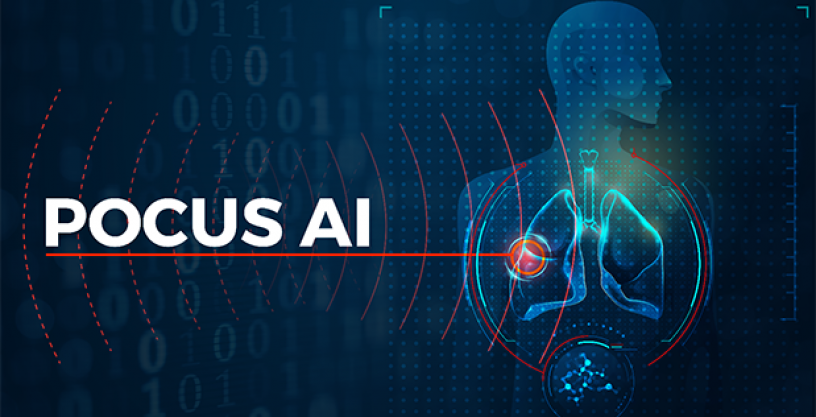
“POCUS AI” teams aim to use advanced artificial intelligence techniques to address broad range of battlefield injuries
May 4, 2021
There is critical need to deploy portable point-of-care ultrasound to the battlefield where it could quickly and accurately address a broad range of injuries. However, logistical challenges, financial concerns and—most importantly—lack of frontline medical personnel trained with these instruments can hinder deploying the technology. DARPA’s Point-Of-Care Ultrasound Automated Interpretation (POCUS AI) program addresses these issues by advancing artificial intelligence (AI) techniques that interpret ultrasound images for medical personnel in austere environments. Moreover, to address the high costs of developing medical imaging AI, new techniques would be developed to train the AI with only tens of ultrasound images as opposed to the thousands of images often used. This stark decrease in training data would be achieved by enabling the AI to directly capture the insights and thinking of current ultrasound experts.
Today, DARPA announced the five research teams selected to create a prototype AI model capable of providing real-time interpretation of portable ultrasound data for multiple applications. Kitware, Inc., Netrias, Carnegie Mellon University, Novateur Research Solutions, and Drexel University aim to develop algorithms to focus on four DoD-relevant battlefield medical needs: detection of pneumothorax, measurement of optic nerve sheath diameter, nerve block guidance, and verification of endotracheal intubation.
“Future battlespaces will likely limit the rapid evacuation of injured warfighters, requiring medical technology that can quickly and accurately respond to injuries directly on the battlefield,” stated Dr. Paul Sheehan, POCUS AI program manager. “Portable ultrasound can address a broad range of injuries, and this program takes a novel AI approach to focus on four key applications identified by battlefield medics and military doctors.”
The 18-month program will be divided into two independent and sequential phases. Phase 1 will evaluate the feasibility of developing AI models for portable ultrasound data classification from very limited model training data, and Phase 2 will demonstrate that these model architectures can be rapidly extended to address multiple new ultrasound applications. DARPA will supply portable ultrasound data collected in human subjects at a DoD medical facility for each trauma application to train, validate, and test the AI models.
The POCUS AI program announcement is available at: https://beta.sam.gov/opp/667875ba2f464ccfa38688ea1a718fe7/view.
# # #
Media with inquiries should contact DARPA Public Affairs at outreach@darpa.mil
Associated images posted on www.darpa.mil and video posted at www.youtube.com/darpatv may be reused according to the terms of the DARPA User Agreement, available here: http://go.usa.gov/cuTXR.
Tweet @darpa
